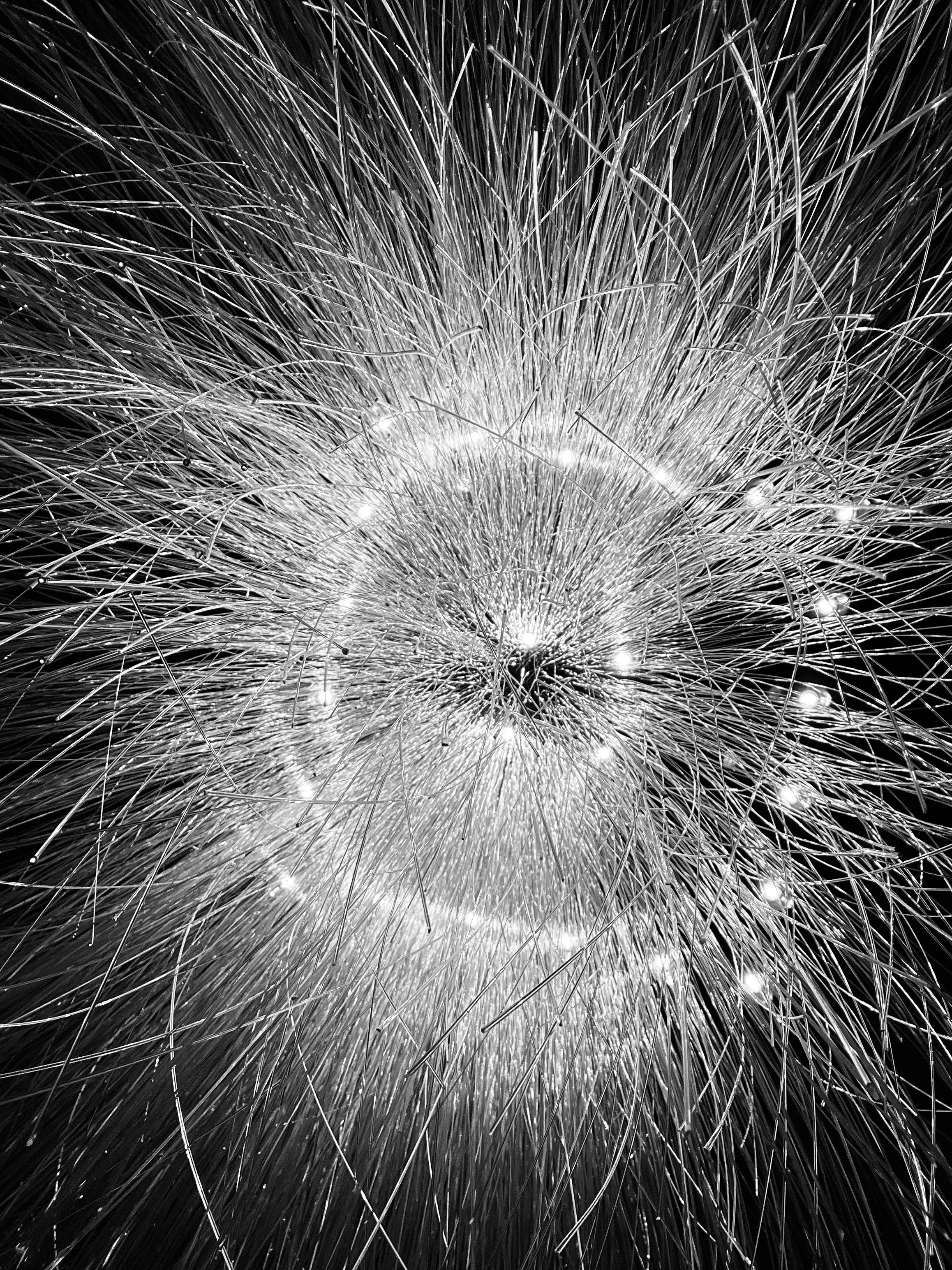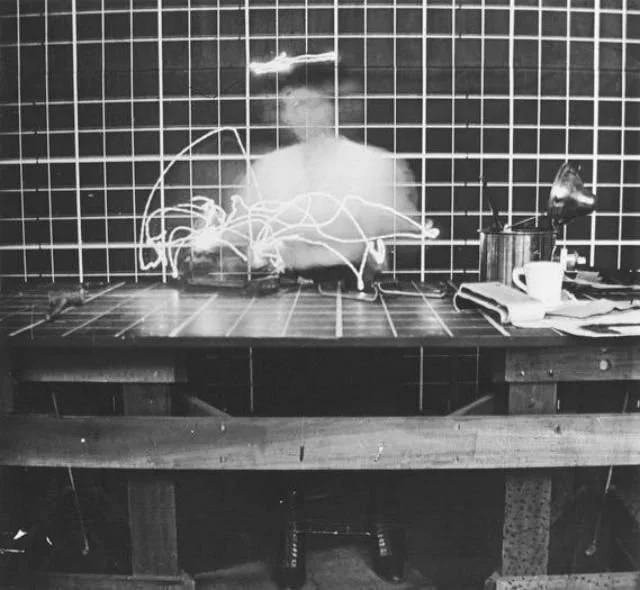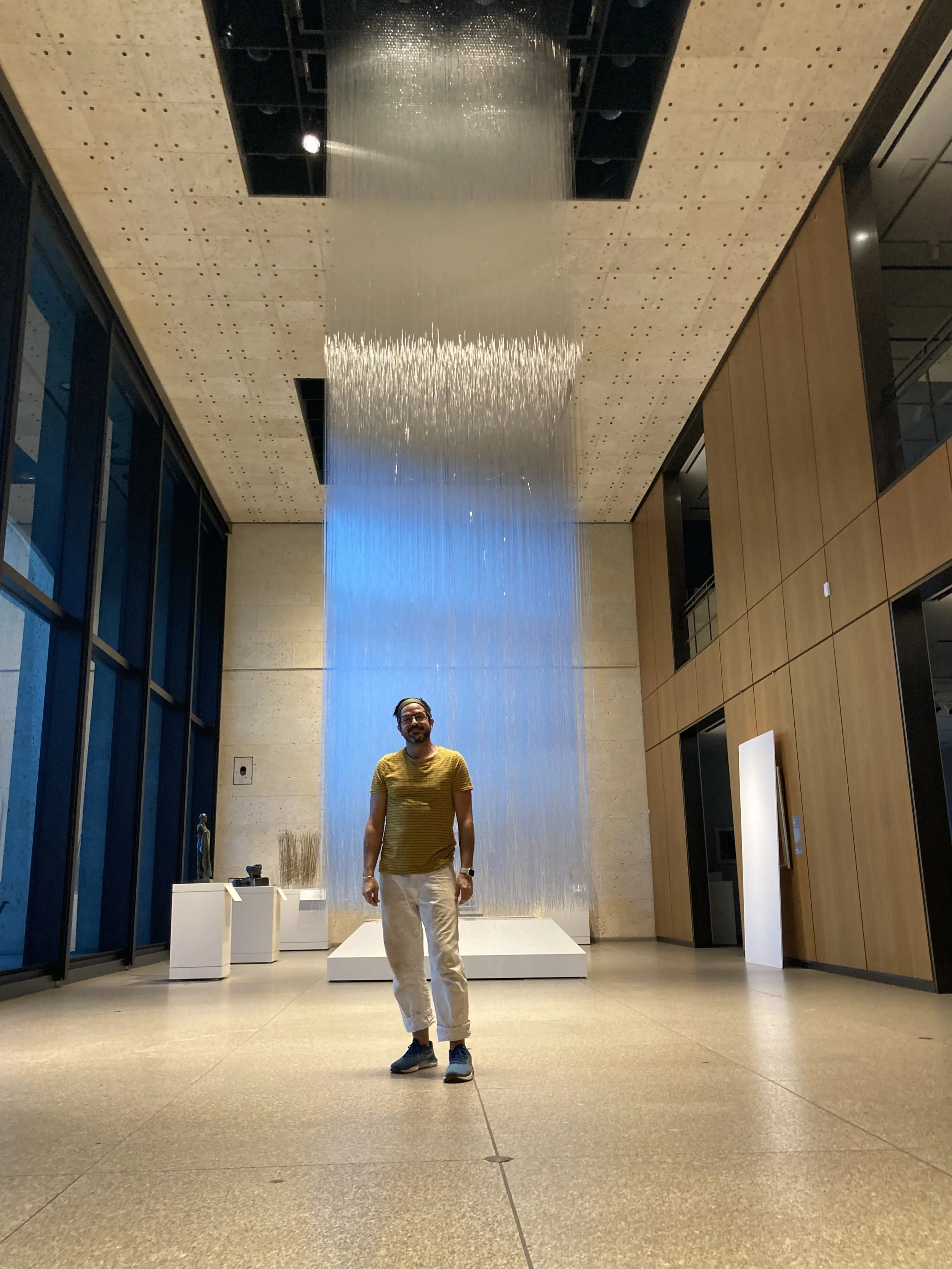
Sky Column: Shaking the Shadow
Solo - exhibition and Site-Specific Installation
June 2022 - February 2023
The Amon Carter Museum of American Art
In 2022, The Amon Carter Museum of American Art presented the exhibition Sargent, Whistler, and Venetian Glass: American Artists and the Magic of Murano. Historic Glass goblets and marvelous mosaics are paired alongside paintings and prints by the leading 19th-century American artists in this first comprehensive examination of American tourism, art making, and art collecting in Venice. Organized by Crawford Alexander Mann III former curator at the Smithsonian, the exhibition brought to life the Venetian glass revival between 1860 and 1915 and the artistic experimentation the city inspired for visiting artists.
As a contemporary intervention in conjunction with the exhibition, I exhibited a solo exhibition with the museum with the site-specific work Sky Column: Shaking the Shadow. In the Summer of 2022, I set up a small furnace on the front steps of the museum and began the arduous task and repetitive action of pulling strings of glass by walking back and forth during the Texas heat. Each single strand of glass represents a distance walked. Using a long solid steel rod, I insert it into 2300-degree molten glass – a little softer than the consistency of honey, and gather a small amount on the tip…I pinch with tweezers, and walk, drawing out a 25’ glass thread. I walk back and repeat, walk back and repeat, as many as 700 times in a single day. In total, I walked nearly 150 miles as a performative aspect of the work. What is represented in the work is 330,151 steps which yielded 193,075 feet of glass - equating to nearly 42 miles. The 8936 strands of glass are each hung individually and supported by their own weight.
Consider a long-exposure photographic image in which the light becomes brilliant lines across a visual surface. The motion is documented through the capture of light. In the early 20th century, Frank and Liliana Gilbreth were using this technique, studying the repetitive movements of factory workers, such as the repetitive motion of folding a handkerchief or preparing food in large quantities – studying the efficiency of motion. I lived this experience - documented through long thin glass strings. Each one is unique and dependent on a variety of factors – outdoor temperature, glass temperature, amount of glass, speed of walking, or wind.
Motion efficiency study by Frank Gilbreth, c. 1914. Collection: National Museum of American History
During the summer, the repetition and meticulousness combined with the oppressive heat were humbling. Like the factory worker, the farmer, the construction worker, the blue-collar workers: coming in before sunrise – setting up, and working all day – sweating, body and joints sore, and consuming as much as 10 liters of water in a shift. This speaks to the history of glassmaking and the work reflected in the exhibition. I consider the labor and repetitive labor involved in all the works presented: but they portray the hierarchy of craft and division of labor.
In the exhibition, the works presented also consider the workers and the different environments they inhabit. Indicative of the stark contrast between the divisions of labor, consider Sargent’s, A Venetian Interior. It is dreary, dirty, and dark. With very little natural light, it captures the banality of everyday life for the bead makers. Mann notes within the catalog that the variety of works capturing the lives of the glassworkers, “… share a strategy of deliberate emotional disengagement. The workers and their work made invisible - are merely parts of a larger whole.”
John Singer Sargent, A Venetian Interior, c. 1880-82
Compared to Robert Blum’s Venetian Lacemakers which is drenched in sunlight. The laborers are seated and comfortable while surrounded by brightly colored walls, smiling, and engaging in conversation. In the two examples, we may consider the differences between the goods and services produced in each of these industries - the value of a handmade bead compared to the luxuriousness of Venetian lace. The glassmakers who exist behind the scenes, outdoors, uncomfortable, dirty, dark, and in the shadows. And the Lacemakers in clean, bright, comfortable, and safe indoor spaces.
Robert Fredrick Blum, Venetian Lacemakers, c. 1887
Sky Column embodied the challenging, sweaty, conditions through the process of making it outside, and the air-cooled sun-filled conditions of the interior gallery. Despite the drastic differences in the environments in which labor was conducted, both groups, the bead makers and lace makers, were highly skilled and relied on highly repetitive movements to complete their work. It is through this gesture that the conditions of the working environment may drift into the background as the process and the work become meditative. A hyper-focus sets in. I became acutely aware of nuances of my body and action: my pace, my steps, the way the ground felt, the muscles in my hand contracting and often going numb, breath, heat, sweat beads, and lightheadedness. I became attuned to my surroundings: the position of the sun, the way the clouds moved, or lack thereof, the absolute joy of a short infrequent, warm breeze. My team and I could identify the moment the temperature reached over 100 degrees, without using our phones. This choreography of connecting to the action, the environment, and each other, through the repetitive 37 steps as I returned to pull another strand, to begin again.
While the strand does indeed become the documentation of distance walked, the hair-like glass fiber is also the material by which telecommunications relies to connect people over vast differences and provide an incomprehensible amount of information. Our reliance on our digital devices, streaming services, and Zoom, made the feelings of isolation during COVID semi-palpable. So I also cannot help but think about the role, long threads of glass played – the incomprehensible network of fiberoptic cables crisscrossing like a web around the planet. It is difficult to imagine that your zoom call, phone call, and scrolling are actually data encoded on single photons of light moving at nearly 190,000 miles a second through these fragile threads of glass. Glass and light is the materials of connection.
For the curious and sustained observer, Sky Column brought the colors of the sky, the sun, and the clouds into the gallery. It changes throughout the day, removing all the harsh outdoor elements propelled by the Texas summer heat, in one of the driest years to date, and becomes a waterfall of sun and sky - connecting.







